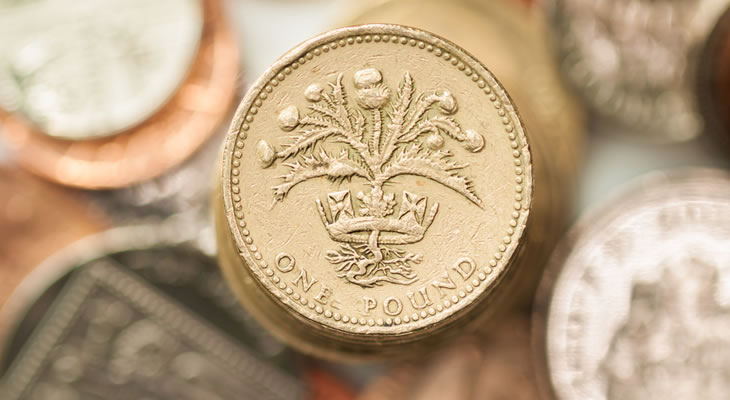GBP: Pound Drops as UK Manufacturing Data Disappoints
Pound Sterling exchange rates stumbled at the start of the new month with the UK’s first significant data release disappointing. The IHS Markit/CIPS UK Manufacturing PMI survey revealed a PMI of 54.3 for June, down from 56.3 in May. Although manufacturers reported growth in production and order volumes, the rate of increase slowed, demonstrating business deceleration in both domestic and export markets.
Rob Dobson, Senior Economist at HIS Markit commented:
‘The UK manufacturing sector largely weathered the uncertainty of a general election and start of formal Brexit negotiations to eke out further output growth at the end of the second quarter. However, the rate of expansion eased again in June, with growth weakening across the consumer, intermediate and investment goods industries.’
Bank of England (BoE) Governor Mark Carney will be providing an update on the Financial Stability Board (FSB) around midday today. Carney, quite unexpectedly, did something of a U-turn last week when he announced that there may be cause for the removal of monetary stimulus, a soundbite that sent Sterling soaring. Investors will, again, be listening carefully to Carney’s comments in an attempt to distil any semblance of sentiment; should Carney appear hawkish Sterling could rally despite the negative PMI. Conversely, a dovish statement could kick Sterling even lower.
EUR: Euro Propelled as Eurozone Manufacturing Growth Hits Six-Year High
Euro (EUR) exchange rates were supported by domestic data this morning. Markit’s Eurozone manufacturing PMI revealed that the Eurozone’s factory sector is growing at its fastest speed in some six years. The PMI printed at 57.5 for June, that’s up from 57.0 in May and higher than forecast. The boom is especially large in Austria, Germany and the Netherlands, which consecutively reported 76 month, 74 month and 74 month highs. Also of note was the fact that Greece’s manufacturing sector returned to growth for the first time for almost a year.
Chris Williamson, Chief Business Economist at HIS Markit stated:
‘Eurozone manufacturing growth gained further momentum in June, rounding off the best quarter for just over six years. At current levels, the PMI is indicative of factory output growing at an annual rate of some 5%, which in turn indicates the goods- producing sector will have made a strong positive contribution to second quarter economic growth’.
In other data; the Eurozone’s unemployment levels have remained at an eight-year low. Unemployment printed at 9.3% for May, the same as April and indeed the lowest since March 2009.
As the day and week progresses it is likely that the Euro will see further gains, especially if the European Central Bank (ECB) decides to start winding down its stimulus schemes. ECB official Jens Weidmann supported this notion over the weekend, stating that the bank is indeed trying to find a way to transition from its ultra-loose policy.
USD: Pound US Dollar Rally Slows, Traders Await US PMIs
Despite the Pound to US Dollar exchange rate rallying to a five-week high on Friday its ascent has now slowed. Last week’s GBP/USD gains were predominantly due to an increasingly hawkish BoE outlook and the International Monetary Fund’s (IMF) negative analysis of Trump’s economic plans. As of Monday morning, however, the UK receiving a negative manufacturing PMI caused the Pound to stumble.
Big data for the US today will be the Markit manufacturing PMI, as well as the June manufacturing, prices paid, employment, and new order ISMs. The manufacturing PMI is expected to remain the same, but any increases could enable the US Dollar to regain even more ground against the Pound.
CAD: Canadian Dollar Leaps on Longest Oil Rally Since 2012
The Canadian Dollar recorded significant gains on Monday morning, as oil prices rose for the eighth consecutive day (at the time of writing Brent crude futures are up 18 cents – that’s $48.96 a barrel).
The Pound to Canadian Dollar exchange rate had previously been trading within a relatively narrow band after positive growth figures added more fuel to the fires of Bank of Canada rate hike hopes. The crude oil rally, however, has increased the divide between the two currencies, as the commodity-correlated ‘Loonie’ was bolstered by the news.
AUD: Negative Building Permit Data makes Australian Dollar Stumble
The Australian Dollar dropped this morning following the release of the Reserve Bank of Australia’s June Index of Commodity Prices and May’s building permit data.
June’s commodity price release presented a -4.3% decrease; 119.5, from 126.1 previously, whilst the Australian building permit data missed the mark, printing at -5.6% month-on-month from 4.8% previously.
With the Pound also suffering as a result of some negative UK PMI data, the pair continues to trade within a relatively narrow band.
NZD: Pound to New Zealand Dollar Exchange Rate Stable as Investors Await Dairy Auction Prices
The New Zealand Dollar kept up with the Pound last week despite Sterling’s surge, as the ‘Kiwi’ Dollar benefitted from a weakened US Dollar, and the Pound was propelled by hawkish BoE sentiments.
Today, Sterling lagged behind due to the negative PMI.
The New Zealand Dairy Auction is due to take place today and any increase in the price of New Zealand’s most important commodity will send the dairy-correlated ‘Kiwi’ higher. Traders remain somewhat bearish in anticipation.


Comments are closed.